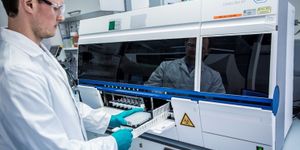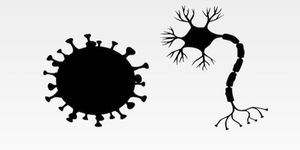Bioconductive ink uses the body's own electrical signals to direct how and where neurons grow
The development of a new bioconductive ink from researchers in Australia, India, and Bangladesh is reported in the journal RSC Advances. The ink uses the body’s own electrical signals to direct how and where neurons grow, a development that promises to have many implications in the field of nerve engineering.
While the bioink has yet to be tested on humans, the research team did conduct experiments on a biocompatible scaffold that they produced for the purpose of this study. The bioink proved capable of directing the growth of nerve cells in organized lines, a feature that is necessary to be able to reconnect nerves and heal traumatic nerve injuries.
"Nerve cells need to be meticulously guided to regrow between the broken ends of a nerve - if they just build up anywhere they will cause more pain or sensory problems," explained lead author, Dr. Shadi Houshyar. "With our bioconductive ink, we can concentrate the neuron growth where we need it.
"Our research is in the early stages but with further development, we hope one day to enable damaged nerves to be fully reconnected, to improve the lives of millions of people worldwide."
This technology could potentially replace the need for nerve graft surgeries, an incredibly invasive procedure that can result in painful neuromas, misalignment of neural cell growth and injury at the harvest site. While not ideal, until now, nerve grafts have remained one of the only options for rebuilding function when an injury cause large peripheral nerve gaps. Unfortunately, other alternative techniques like artificial nerve guides, do not always achieve full functional or sensory recovery.

So how does the new bioink work? As explained by Dr. Houshyar, the ink uses dopamine combined with a conductive carbon nanofiber and polymer to enable its controlled release in order to stimulate enhanced nerve cell survival. "Using conductive materials allows free movement of electrons, stimulates cell growth and helps connect injured neural tissue," says Dr. Houshyar, who is a Vice-Chancellor's Research Fellow in the RMIT School of Engineering. The nanofiber also takes advantage of the body’s electrical signals produced by the nervous system in order to accelerate the healing of nerves.
In testing their ink, the team determined that printing the product in ordered lines helped to enhance cell attachment, migration, and differentiation, all of which are crucial for nerve regeneration.
"This supports proper communication with other neurons, which is promising for the establishment of neural circuits for sensory and motor processing - offering hope the technology could lead to a real recovery of nerve function," Dr. Houshyar said. "Our end goal is a nerve engineering solution that can direct the growth of the right nerve cells in the right places," she explained. "We're also keen to investigate how we can expand the potential uses of this technology, for speeding up wound healing and improving patient recovery."
Sources: RSC Advances, Eureka Alert








